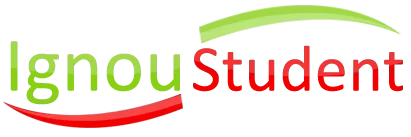IGNOU BLIS Syllabus 2025 – Download PDF Block-Wise (BLI-221 to BLIE-229)
Are you planning to take admission in IGNOU BLIS course in 2025? Or maybe you’ve already joined and now wondering, “What will I study in IGNOU BLIS?” Don’t worry! In this blog, we’ll explain the full IGNOU BLIS Syllabus 2025 in very simple words. Whether you’re a student, working professional, or just curious, this guide is for you.
Let’s begin!
What is IGNOU BLIS?
IGNOU BLIS stands for Bachelor of Library and Information Science. It is a 1-year course for students who want to build a career in libraries, information centres, or digital archiving.
🔗 Also Read about: IGNOU BLIS Admission
What Will You Study in IGNOU BLIS Syllabus 2025?
The course has 9 subjects, also called course codes. They go from BLI-221 to BLI-229.
Here’s the list of subjects:
- BLI-221: Library, Information and Society
- BLI-222: Information Sources and Services
- BLI-223: Organising and Managing Information
- BLI-224: ICT Fundamentals
- BLI-225: Communication Skills
- BLI-226: Management of Library and Information Centre
- BLI-227: Document Processing: Practice
- BLI-228: Information Products and Services
- BLI-229: ICT in Libraries
🔹 Block-wise Syllabus from eGyanKosh
Each subject is divided into blocks and units. Here is the block-wise syllabus as per IGNOU’s official digital library eGyanKosh:
BLI-221: Library, Information and Society
Block-1: Library and Information in Social Perspective
- Unit-1: Libraries, Information and Knowledge-based Society
- Unit-2: Types of Libraries
- Unit-3: Information Institutions
- Unit-4: Laws of Library Science
Block-2: Library and Information Related Legislation
- Unit-5: Library Legislation and Model Public Library Acts/Bills
- Unit-6: Library Legislation in Indian States – Their Salient Features
- Unit-7: Other Information Related Legislations
Block-3: Resource Sharing and Library Networks
- Unit-8: Resource Sharing
- Unit-9: Library and Information Networks and Consortia
- Unit-10: Library and Information Networks and Consortia: National and International
Block-4: Library and Information Profession and Related Agencies
- Unit-11: Librarianship as a Profession
- Unit-12: Ethical Issues in Librarianship
- Unit-13: Role of Professional Associations
- Unit-14: Organisations and Institutions Involved in the Development of Library and Information Services
BLI-222: Information Sources and Services
Block-1: Documentary Sources
- Unit-1: Categorisation of Sources
- Unit-2: Primary Sources
- Unit-3: Secondary and Tertiary Sources
- Unit-4: Criteria of Evaluation
Block-2: Non-Documentary Sources
- Unit-5: Humans as Sources of Information
- Unit-6: Institutions as Sources of Information
- Unit-7: Media as Sources of Information
Block-3: Information Services
- Unit-8: Information Services: An Overview
- Unit-9: Types of Services: Reference Service, CAS, etc.
- Unit-10: Literature Search and Database Services
Block-4: Information Use and User Studies
- Unit-11: User Education and Information Literacy
- Unit-12: User Studies
- Unit-13: Information Use Studies
- Unit-14: Marketing of Information Services
BLI-223: Organising and Managing Information
Block-1: Library Classification
- Unit-1: Basic Concepts
- Unit-2: Type of Classification
- Unit-3: Postulational Approach
- Unit-4: Comparative Study of Schemes of Classification
Block-2: Library Cataloguing
- Unit-5: Basic Concepts
- Unit-6: Types and Forms of Catalogues
- Unit-7: Formats and Standards
- Unit-8: Cataloguing of Non-Book Material
Block-3: Indexing
- Unit-9: Basics of Subject Indexing
- Unit-10: Indexing Languages
- Unit-11: Indexing Techniques
Block-4: Recent Developments
- Unit-12: Conceptual Changes: Impact of Technology
- Unit-13: Online Catalogues: Design and Services
- Unit-14: Overview of Web Indexing, Metadata, Interoperability and Ontologies
BLI-224: ICT Fundamentals
Block-1: Basics of ICT
- Unit-1: Basics of Computer Technology
- Unit-2: Basic of Communication Technology
- Unit-3: Basic of Network Technology
- Unit-4: Technology Convergence
Block-2: Middleware Technologies
- Unit-5: Office Tools: Word Processing, Presentation and Spreadsheets
- Unit-6: Database Management Systems
- Unit-7: Multimedia
Block-3: Network Fundamentals
- Unit-8: Network Topology
- Unit-9: Communication Protocols and Network Addressing
- Unit-10: Protocol Architecture
- Unit-11: Network Applications and Management
- Unit-12: Network Security
Block-4: Internet Tools and Services
- Unit-13: E-Mail and E-Messaging
- Unit-14: World Wide Web
- Unit-15: Search Engines
- Unit-16: Interactive and Distributive Services
BLI-225: Communication Skills
Block-1: Communication Fundamentals
- Unit-1: The Basics
- Unit-2: Social Skills
- Unit-3: Introducing the Institution
Block-2: Preparing for Job Interview
- Unit-4: Your Profile
- Unit-5: Preparing Your Portfolio
- Unit-6: Preparing Your Resume/Curriculum Vitae
- Unit-7: The Job Interview
Block-3: Workplace Skills
- Unit-8: Presentation Skills
- Unit-9: Telephone Skills
- Unit-10: Group Discussions
- Unit-11: Body Language
Block-4: The Writing Skill
- Unit-12: The Writing Skill: Some Basic Guidelines
- Unit-13: Internal Correspondence at the Workplace
- Unit-14: External Correspondence at the Workplace
Block-5: Advanced Writing Skill
- Unit-15: Basic Features of Proposals
- Unit-16: Writing Reports
- Unit-17: Questionnaire Method
BLI-226: Management of Library and Information Centre
Block-1: Principles and Practices of Management
- Unit-1: Principles and Functions of Management
- Unit-2: Total Quality Management
- Unit-3: Change Management
- Unit-4: Application of Principles of Management in Library and Information Centres
Block-2: Library Functions and Operations
- Unit-5: Basic Housekeeping Operations Part-1
- Unit-6: Basic Housekeeping Operations Part-2
- Unit-7: Physical Infrastructure Planning
- Unit-8: Maintenance and Preservation
- Unit-9: Disaster Management
Block-3: Financial Management
- Unit-10: Sources of Finance and Resource Mobilisation
- Unit-11: Budgeting Techniques
- Unit-12: Budget Preparation
Block-4: Human Resource Management
- Unit-13: Basics of Human Resource Management
- Unit-14: Human Resource Planning
- Unit-15: Human Resource Development
BLIE-227: Document Processing – Practice
Block-1: Classification – DDC (19th Edition)
- Unit-1: Introduction, Structure and Organisation
- Unit-2: Definitions, Notes and Instructions
- Unit-3: Introduction to Three Summaries and Steps in Classifying Documents
- Unit-4: Relative Index and Its Use
- Unit-5: Study of Tables and Schedules
- Unit-6: Auxiliary Tables and Devices
- Unit-7: Practical Classification
Block-2: Cataloguing – AACR 2R and MARC 21
- Unit-8: AACR-2R: Preliminaries
- Unit-9: Choice and Rendering of Headings and Statement of Responsibility
- Unit-10: Cataloguing Multivolumes, Serial Publications and Nonprint Media
- Unit-11: MARC-21 Cataloguing
Block-3: Indexing – Sears List of Subject Headings
- Unit-12: Structure of Sears List of Subject Headings (18th Edition)
- Unit-13: Keyword Indexing
- Unit-14: Chain Indexing (DDC – 19th Edition)
BLIE-228: Information Products and Services
Block-1: Conventional Products and Services
- Unit-1: Literature Search and Bibliographic Services
- Unit-2: Current Awareness Services (Including SDI and Alerting Services)
- Unit-3: Abstracting, Digest and Newspaper Clipping Services
- Unit-4: Referral Service
Block-2: Special Products and Services
- Unit-5: Information Analysis
- Unit-6: Information Consolidation and Repackaging
- Unit-7: Information Analysis and Consolidation Products
Block-3: Document Delivery Service
- Unit-8: Document Delivery Service: An Overview
- Unit-9: Electronic Document Delivery Service
- Unit-10: Translation Service
Block-4: Web Products and Services
- Unit-11: Web Sharing
- Unit-12: Collaborative Content Development
- Unit-13: Web Marketing
BLIE-229: ICT in Libraries
Block-1: Library Automation
- Unit-1: Introduction to Library Automation
- Unit-2: Library Automation Processes
- Unit-3: Library Automation – Software Packages
- Unit-4: Library Automation: Applications of Open Source Software
Block-2: Digitisation and Digital Libraries – DSpace and GSDL
- Unit-5: Introduction to Digital Library
- Unit-6: Digitisation Process
- Unit-7: Creating Digital Libraries Using DSpace
- Unit-8: Creating Digital Libraries Using GSDL
BLII-230 Internship
- BLIS Internship Alternative: Literature-Survey
- Standard Operating Procedure for Internship
- BLIS Internship Alternative: Library-Based Survey
📅 How Long is the Course?
It’s a 1-year diploma course, but students can take up to 2 years to complete it if needed.
📚 Study Material
All the books are available in PDF format on eGyanKosh. You can search by course code (like BLI-221) and download free study material. Also, to make it easy for students, we have provided direct links on our website to download IGNOU BLIS Study material
IGNOU BLIS Syllabus PDF Download
Are you looking for the complete IGNOU BLIS syllabus in one place? Whether you’re planning to take admission or are already enrolled, having the full syllabus in PDF format can make your preparation easier and more organized.
The syllabus includes all course codes from BLI-221 to BLIE-229, along with block-wise units, topics, and structure. This official study material, provided by IGNOU, helps you understand the subjects, assignments, and exam expectations clearly. Below, we have provided the IGNOU BLIS syllabus 2025 PDF free download link:
Use this syllabus to plan your studies, track your progress, and prepare for TEE exams with confidence.
📝 Final Words
The IGNOU BLIS Syllabus 2025 is designed to give you both theory and practical knowledge. From library basics to digital tools, you will learn everything step by step. If you stay consistent, you can easily complete this course and move toward a successful career.
Still have questions? Drop a comment or visit IGNOU’s official site.
Good luck, future librarians!



